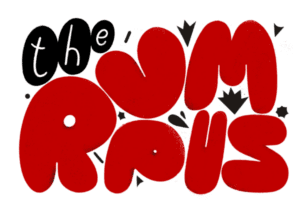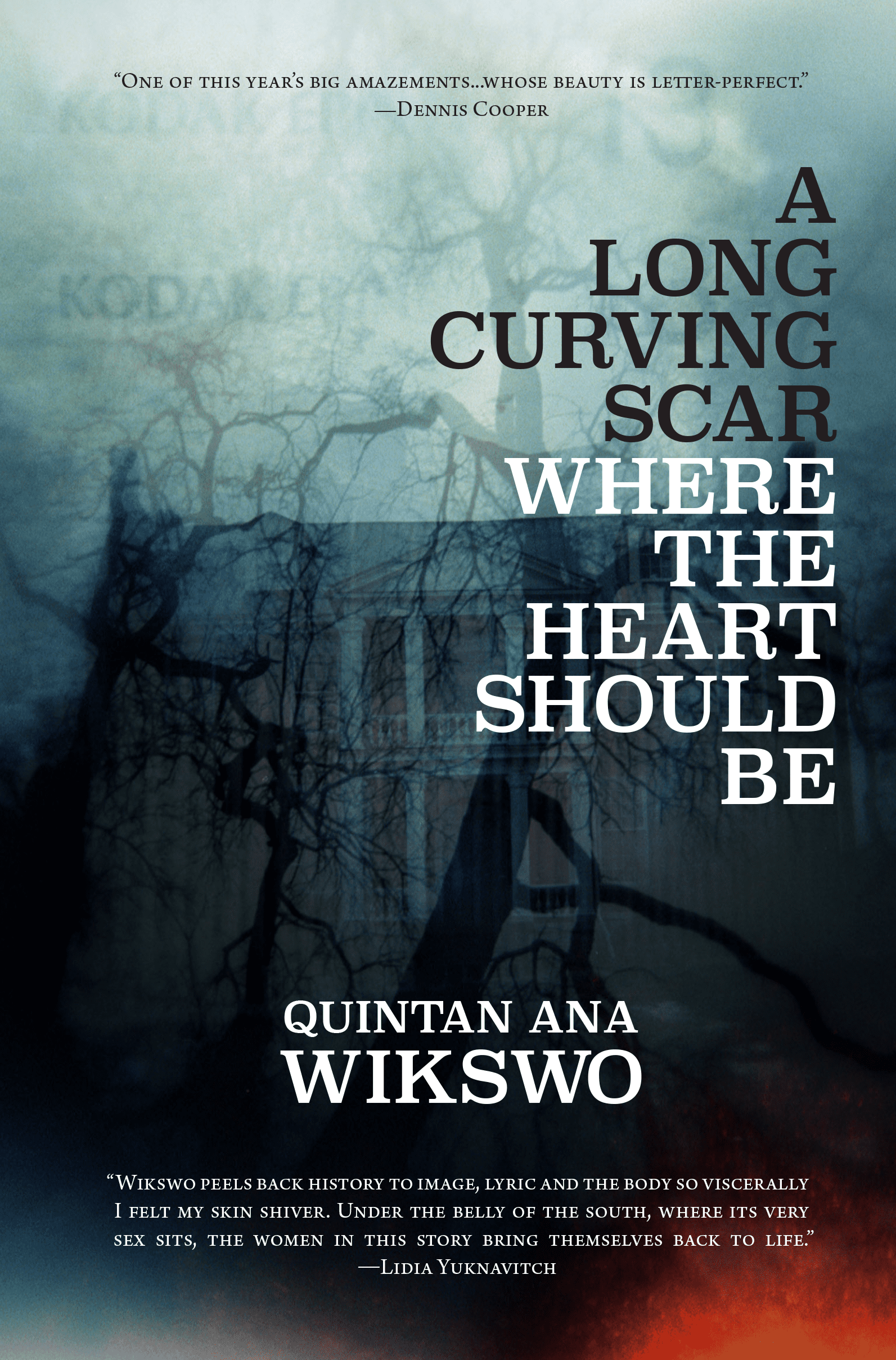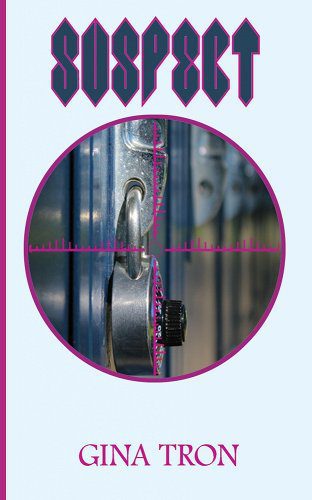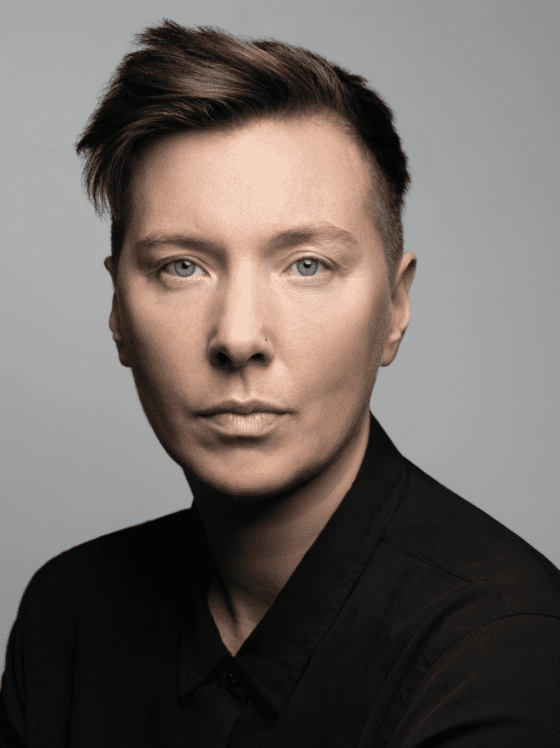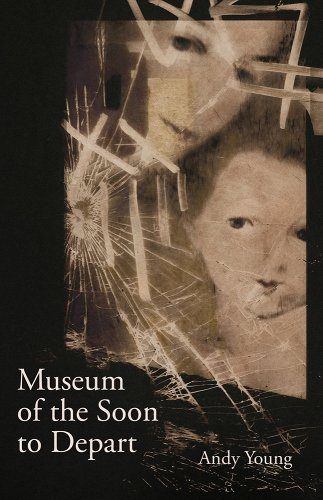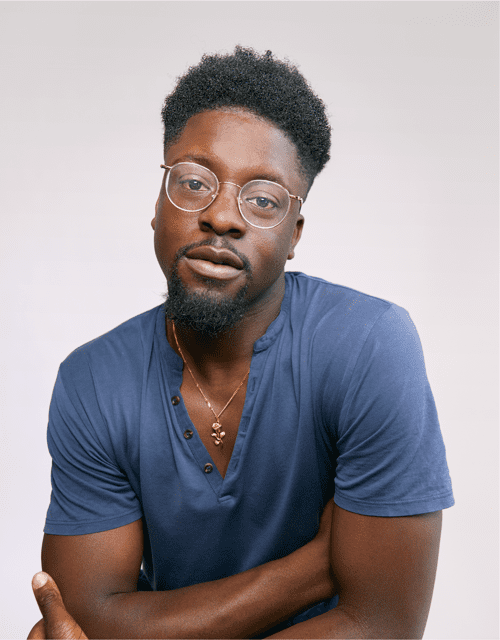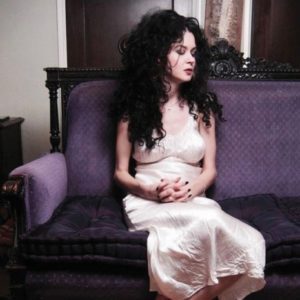
Quintan Ana Wikswo is the author of a story collection, The Hope of Floating Has Carried Us This Far, and a novel, A Long Curving Scar Where the Heart Should Be, which traces the trajectories of an impoverished midwife and her twin daughters as they create a hospice for outcasts inside a deserted antebellum plantation on the outskirts of a conservative 1930s Southern town.
But reducing this novel to a plot summary doesn’t do it the justice it deserves: the book aims to explore the experience of mixed-race folx, queer sexuality and erotics, and gender dis/enfranchisement; the characters are haunting, and the prose provocative.
Wikswo, who grew up queer in the South, spent ten years on an NEA fellowship visiting sites in Virginia where hate crimes have taken place, taking photographs and re-examining their histories. Her methodology—which includes the use of segregation-era cameras, and no digital manipulation—allows for uncanny images that capture the complex and contradictory nature of history. Placed alongside her revelatory text, Wikswo’s photographs help create an aesthetic that is fluid, gothic, and electrifying.
We spoke via email in early February, delving into the facets of trauma, family lineage, and her creative processes.
***
The Rumpus: My copy of A Long Curving Scar Where the Heart Should Be came with a note tucked into the last pages that read: “Start here! Begin at the end!” And so I did, with your Notes on Methodologies, and I’d like to open this interview there, too, because the way you approach your work is as fascinating as the work itself. Why did you decide to focus your energy on these specific sites in the American South?
Quintan Ana Wikswo: I have personal, ancestral, relational, genetic history at each of these obscure but archetypical Southern sites. As both geographical locations and as events in time, their legacy of genocide, atrocity, exploitation, and trauma resound through my family and many other families into the present day. My book surrounds these places because these places surround me, and have since before my birth.
It’s important to recognize that these spacetime sites are Schrödinger’s cats—some consider them sites of atrocity, while many white people host elaborate weddings there. We would consider celebrations at Auschwitz or Dachau to be sociopathic at best, but it’s socially encouraged to do so at the Lynchburg Old City African American Cemetery, the killing fields at Bleak Hall Plantation, Botany Bay Plantation, Carnton Plantation, and so forth. These places are uncomfortable, and A Long Curving Scar Where the Heart Should Be explores how to take extreme discomfort and use it as a tool for liberation.
Like many mixed-race, mixed-queer, mixed-class families, these spacetime sites contain contradictions, and the threads between perpetrator and victim are entangled, the morality and ethics of ancestral choices are snarled: the book is a commentary on the need to dismantle as many walls and borders, boundaries and containers as possible.
Rumpus: Why did you use segregation-era cameras and typewriters while you were in the field?
Wikswo: There is a Kabbalist belief that it’s possible to reclaim an object that is riddled with evil, and to return it to a sacred state of being. To simply refuse to surrender it to ill-use. I’ve certainly been criticized for not destroying artifacts of atrocities, but equally lauded for putting them to use for opposite purposes. I refuse to surrender the cameras and typewriters that were tools of repression, and I try to metamorphosize them into tools of liberation.
A more practical reason for using these tools is that they serve as beacons to people who make the connection between the machines and the spacetime site. It’s a means of connecting with fellow travelers who have the same preoccupations as I do.
Using segregation-era equipment in the field is also a way of using the tools of the master to dismantle the master’s house, if I may invert Audre Lorde’s writing. To take the tools of repressive identity policing and encourage full freedom of movement and agency of self-definition.
Rumpus: What comes up for you—emotionally, physically, mentally—when you’re doing fieldwork?
Wikswo: It’s a strange phenomenon of being simultaneously embodied and disembodied. I usually get headaches, body aches, sore eyes, and stomach aches, my spine seizes up, my shoulder blades spasm, my neck will freeze, and I have seizures… things that remind me that I am in a human body that is stressed out and in pain.
And yet I also feel suspended in a community of opinionated and typically very loyal spirits, so there is a complete saturation in their tenderness, fury, love, grief—a potent reminder of all the non-corporeal aspects of human experience. The land itself can be healing, as the flowers cover the mass graves and the ghosts that stick around are often very admirable and radicalizing in their determination to be heard and seen and recognized.
Rumpus: What’s your creative process like?
Wikswo: My process is a set of nested circles, or a spiral. I return to the same obsession and then add more obsessions. I never plan ahead what I am going to write—it’s whatever is gnawing at me and I keep going and going until the gnawing stops. I don’t plan the structure, the characters, the language, but it is very deliberately transcribed as it evolves, as it eats at me and its hunger leads me in the direction of nourishment.
It feels very physical as well as metaphysical, this gnawing. It’s a kind of torturous but oddly pleasant pestering. A multiple orgasm that won’t stop. A swarm of bees, or ants that just won’t let up their ruthless pursuit. Sometimes you know why they are after you, and other times it’s just maddening that they have chosen you to pursue. But I am not interested in work that does not stalk or hunt me. It has to want me as much as I want it or there’s no value in the relationship.
Rumpus: As I read A Long Curving Scar Where the Heart Should Be, I couldn’t help but think that everything in the book (characters, narratives, nature, inanimate objects) seeks to break boundaries, which got me thinking that in order for something to heal cleanly it must often be re-broken and set right. Even though the novel takes place in the 1930s, the story feels like an apt metaphor for the current state of affairs in America.
Wikswo: This is the very phenomenon of trauma—fragmented sensory and cognitive data that loops and loops until the fractured pieces find resting places in the self. Post-traumatic stress disorder is the experience of breaking over and over again. In my experience, the ability to survive is not about sustaining a single wound and then healing it; we are required to survive the initial wound, and then each re-wounding, and then accept the fact that healing may or may not occur. It’s a surrender, and also a resistance movement.
There’s no question for me that if healing is to happen, pain is the path to get there. Pain is necessary to build strength, endurance, tenacity, stubbornness. Pain and discomfort are not the enemy—the enemy is the pressure inside that suggests that they will win in the end.
American culture—especially since the 1950s—celebrates comfort and ease. That’s success. That’s making it. That’s being rich, and powerful, and never having to be bothered by anything whatsoever. I set A Long Curving Scar Where the Heart Should Be in the 1930s because it was between wars, it was the Great Depression, and the Dust Bowl, and a time of exploring ideas like socialism and the New Deal and anti-poverty work.
After WWII, people returned from a destroyed world and wanted never to suffer again. We ran to distraction and escape and superficiality of consumer commodities, where the goal is comfort at any cost. We need the opposite now—a willingness to suffer for a higher reason, to acknowledge pain, to commit to creating and sustaining and enduring existential discomfort.
There is a beautiful legacy of liberation organizing by free blacks and enslaved people, queer folx, women, Indigenous resistance workers, whose sight lines guide us not to navigate away from trauma but face it with courage and change and restitution.
A Long Curving Scar Where the Heart Should Be is set in the 1930s but we are in a time loop where it’s clear that as a country, we are walking over exploited bodies at every step. The book is about how the bodies, minds, and souls of mixed-raced women and women of color are the first to be punished for existing—and how we can navigate this reality to reach a place of agency.
Rumpus: Two twin sisters, Whitey and Sweet Marie, inhabit the core of this book: how did they come to you? Why twins? Why such opposites?
Wikswo: Initially they were my grandmother and her sister, but eventually they became two sides of myself. I was filled with a lot of anger and resentment against them both, and against society, and Southern communities, and America, and of course against myself. And I figured the only way through it was to turn to the archetypical mythos of shadow selves, and twinning, and make us all share bodies.
I never intended for the sisters to be especially likable female characters. At first, I let people read various pages and everyone thought they were monsters. I liked that. And then I thought, why are they monsters? Because they engaged in lesbian fisting, and suicide attempts, and passing, and other taboo subjects that made marketing departments at publishers very loath to extend contracts? Nonsense. As we know, female writers must be likable, and we must write likable female characters. In the end, I like the sisters very much. They are both muscular and take up all their space, they are unafraid to become huge and alive and visible.
Rumpus: Whitey and Sweet Marie embody two very different female sexualities—Whitey is bawdy and bodily, while Sweet Marie is ethereal and spacey—and their experiences cover a vast ground of what it means to live in a female/feminine body. Why was it important to tell these particular stories through their eyes?
Wikswo: Whitey and Sweet Marie see the world more clearly because the world doesn’t allow them to participate in it—things have happened to them and they have done things that have exiled them into an outcast territory. They are banished, but can watch the overlords without being complicit in their crimes. Their exile from a sick society makes them, in a perverse way, free.
I experienced the South’s rules for the feminine and for female sexuality from age five until age twenty. I was cursed out as a lesbian before I knew the meaning of the word. I had no concept of consensual sex. I was forcibly and illegally married to a relative when I was ten. During that time, I was a thousand different women, and none of them seemed right but none were boring or conventional. They were all outside the true me, though, which was female and sexual but also exploded beyond the limitations of those terms.
I also fell in love with Cormac McCarthy’s early work, and with Henry Miller’s and Lawrence Durrell’s and William Faulkner’s, and was enraged that they could freely muck about in male/masculine eroticism and sexuality and physicality, and they could talk about juicy pussies and all sorts of things but the pussies could not be permitted to speak for ourselves. I wanted to write the ultimate Southern novel where women spoke for ourselves, and our own bodies, and our own erotics.
Rumpus: The book’s ending seems like a happy one, as though by breaking free from the chains of the past—their house, their bloodlines—the twins are able to taste some bit of salvation. But it’s bittersweet.
Wikswo: It is an intentionally happy ending. First, because although I don’t understand how or why, I believe that for the writer a book is both a spell and a prophecy, and I wanted to be happy. Second, I wanted queer women in literature to be happy. Third, I wanted outspoken, misfit, outcast, mixed race, queer, dissident, forgotten, erased, abused women to be happy. Fourth, because I am actually happy, in spite of everything, or perhaps to spite everything. Women going through persecution and ending up free and happy? We need more of that, in life and in narrative.
Yes, it’s bittersweet. It’s bitter to wake up in the morning and realize what was required of me as a person to have any substantive agency over my life—what violence I survived, what evil I was dealt, and how unlikely happiness has always seemed. It’s bitter to know that I am not unique in this. It’s bitter to have moments when I realize that I’m happy, and be so terrified of losing it that I hide under the bed. It is bitter to feel survivor’s guilt, because I’ve lost so many friends to violence and death. That’s bitter.
The ending had to be happy. Just because I’m a contrarian, and I don’t want the sociopaths to win. We will be happy. There is a promised land for us.
Rumpus: Like your previous book, A Long Curving Scar Where the Heart Should Be pairs photos alongside text. How do you decide which photographs to place where, within the book?
Wikswo: That was easy—I wanted the colors to go together, as the narrative unfolds. I wanted the colors to represent a bruise as it shifts over time. Reds, blues, greens, yellows. Yellow is our happy ending. When it is still there, but faded. Drifting into a memory.
I was beaten by a lover in New Orleans when I was in my early twenties, and the police were skeptical and suggested that I had put the bruise there myself with makeup to frame my man, who was an honorable combat veteran and had a penis just like them. They were looking for any excuse not to provide justice for me. I thought to myself, well, if it’s makeup, I’d have to start with blue eyeshadow, then red, then green, and then a sort of mustard yellow as it faded away. I became fascinated by the absurdity of faking a bruise. They unfold over time. It would be so difficult, whereas a man punching a woman in the face in an attempt to kill her is actually rather easy. Occam’s razor itself suggests that it’s less likely that a woman would cosmetically fake a hate crime than for a man to hit her.
The novel is dedicated to my friend and mentor and idol who ordered me to write the book—Dr. Robin Kilson, a former Black Panther and Harvard professor who noticed me missing, tracked me down in New Orleans, bought me a first-class plane ticket to Austin, met me at the airport, and told me to write the first chapter of the book while my bruises healed. I would quite likely have died without her.
Rumpus: Place—specifically Lynchburg and the white house on a hill—strongly dominates this narrative and the characters within it. Do you find this influence to be stronger in the American South than other areas of the country?
Wikswo: I spent most of my life as a human rights fieldworker, located in post-genocidal communities and sites of atrocity. I don’t think the South has more potency in terms of place, but I do think that three things happened there that made it uniquely potent. Africans were forcibly transported from a free continent to a continent where they were contained within a massive slave labor death camp. This shock has left its mark on the consciousness, the architecture, the ecology, and the language of the South. Europeans chose to leave a continent of exploitation, violence, and repression and then recreated it while adding genocide and slavery to the formula. Native Americans inhabited the land at a far more sophisticated, intelligent level than Europeans and were almost entirely either murdered or death-marched out of it into exile.
The South is unique in being a tangible site for traumatic exodus and arrival. All three of these cultures have exceptional storytelling traditions. And there is a lot of blood in the soil, and enough of us who won’t ever let that blood vanish because it’s so full of crimes against humanity. The South is a swamp of conspicuous hatred, but thanks in large part to the longstanding resistance of African American activists, it’s a place where it’s becoming more and more difficult to conceal crimes.
I do think the South is unique in the United States for the sheer flagrancy of its bigotry. I grew up in the 1980s and 1990s near the birthplace of the KKK and most people felt that active membership was nothing to hide. I was often frightened. I did not attend school until I was fifteen, and then I went to the only non-segregated high school. We were constantly facing bomb threats and violence. For years, there was a white man in a red pickup truck who would circle our school with his shotgun, just to terrorize us.
As soon as I was old enough to make photocopies and empty trash cans for the civil rights activists in Nashville, that’s what I did. They were people who had marched on Selma. They carried alongside them their murdered colleagues, visible as day. We were surrounded by murder, abuses of power, intimidation, hate—twilight laws, the active segregation, miscegenation harassment, the incessant regulations limiting by force what a queer or colored body was permitted to do. In a segregated city, there was an urgency about getting to the right side of the river before dark because after dark, you were even less safe. That’s an active twilight law. In 1992. While writing the book I survived several attempted hate crimes and a lot of Klan intimidation. In 2013.
The book itself is a spacetime site. It is difficult to say that the lives of Whitey and Sweet Marie, or [the rest] could be securely situated in the 1930s. Everything they dealt with extends far ahead and far behind them in time, but in the exact same space. These places exert an almost preternatural destiny that seems to doom their inhabitants. It is quite difficult to escape that force field, that vortex of trauma. That’s the ultimate message of the novel. How can we redeem ourselves in these places? How can a heart exist? And how can we bring justice to a past that insists on being the future?
